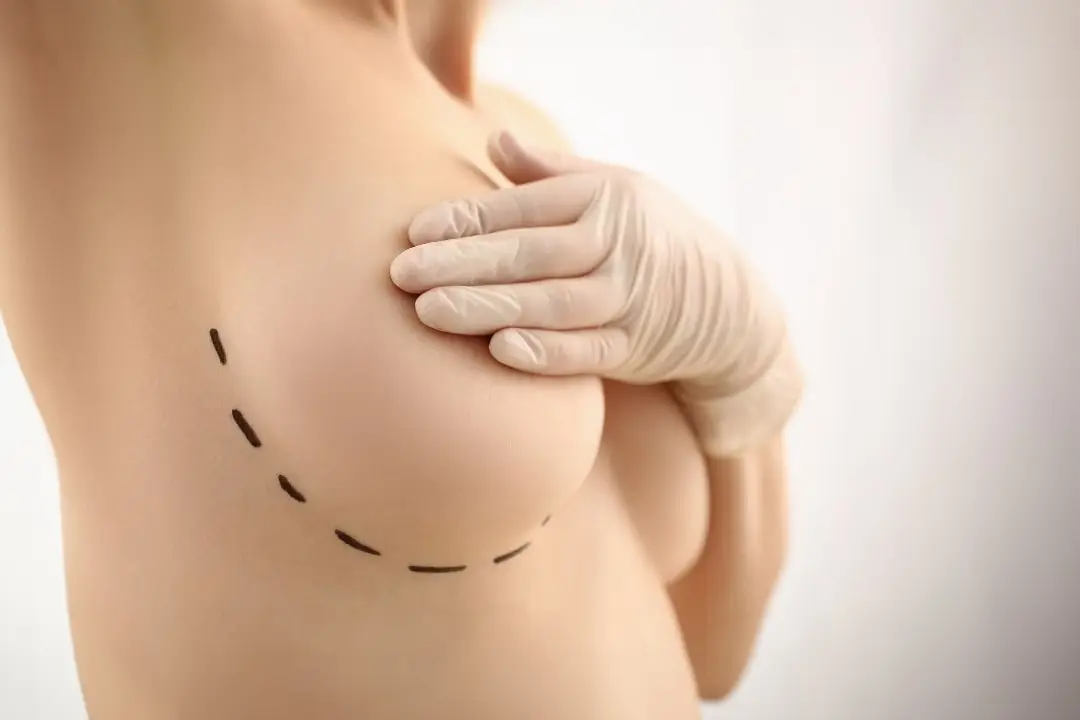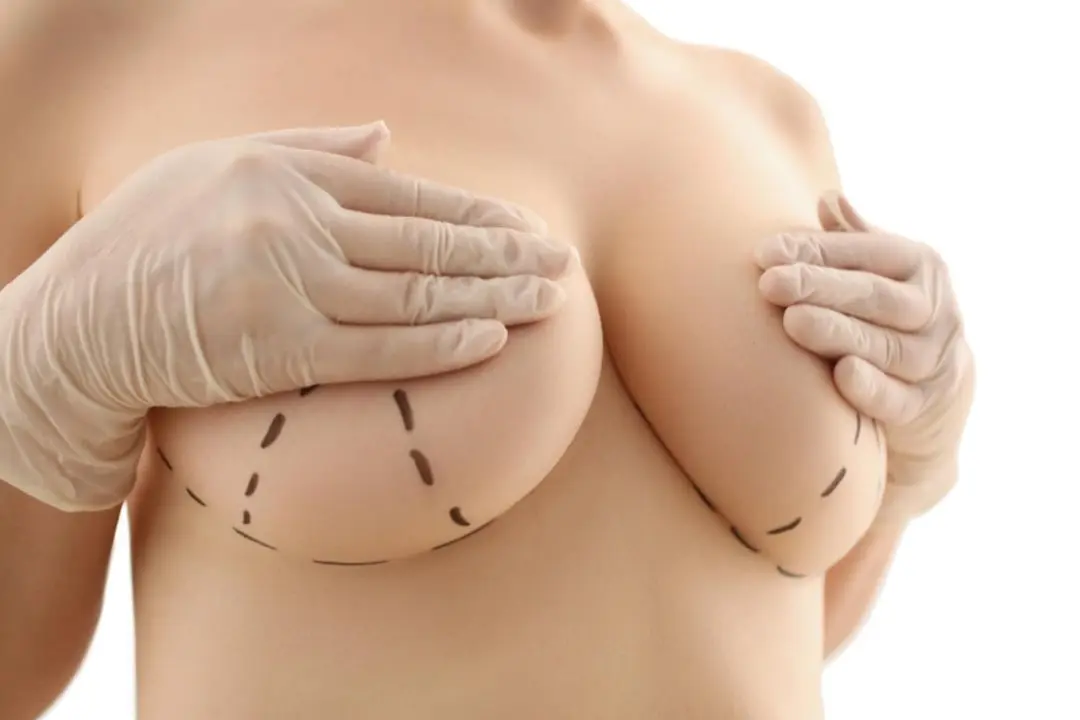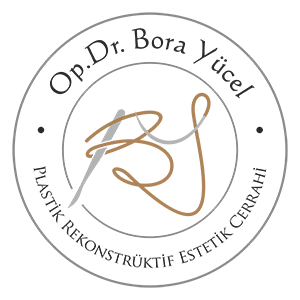What are breast reduction scars?
Breast reduction scars are part of the healing process after reduction mammaplasty. Breast reduction surgery leads to the formation of scars during the cutting of the skin and tissue healing. The scarring occurs as the skin repairs itself after surgery and is usually in the form of fine lines, which may be slightly different in colour from the natural skin tone.

Breast reduction can cause different scars depending on the technique used. The degree to which each surgery leaves scars depends on the type of intervention performed, the size of the breast, the patient's genetic makeup and individual differences in the healing process. In addition, the extent to which the care instructions applied after surgery are followed can also affect the size of the scars. In general, although recovery with minimal scars is possible, proper care and the healing process play an important role in reducing the appearance of scars.
What are the different types of breast reduction scars?
Scars in breast reduction surgery vary depending on the surgical technique used and the individual characteristics of the patient. Your surgeon will take a careful approach to minimise scars in order to improve aesthetic and functional results. However, scars are inevitable in every surgical procedure.
The most common types of scars during breast reduction are shaped according to the surgeon's preferred technique. The two most known methods: Vertical (lollipop) and Inverted (anchor) procedures. In the vertical procedure, an incision starts around the areola and extends to the lower fold of the breast. In the reverse anchor procedure, three incisions are made: Around the areola, in the lower fold, and inside the fold. These scars usually form an ‘inverted T’ shape.

Some surgeons may use more minimal techniques to reduce scars in the inframammary fold, but these methods are usually suitable for breasts that are not very large. In breast reduction procedures performed with liposuction technique, less prominent scars remain and this is generally known as “scarless breast reduction”.
Breast reduction scars heal over time and surgeons usually prefer to make incisions in areas where scars are less noticeable. To achieve the best results, scar care and the correct healing process are very important.
Do breast reduction scars look different or change over time?
How scars change after breast reduction surgery is an important factor in the healing process. At different stages of healing, the appearance of scars changes over time and often fades. You can usually cover breast reduction scars with your clothes. Here is the timeline of scars after breast reduction surgery:
Breast reduction scars after 3 weeks
After surgery, the incision sites are usually protected with bandages. At this stage, your wound may have bruises and swelling, but the focus is on the healing process. During this period, it is very important to keep the area clean and rest.
Breast reduction scars after 1 month to 6 weeks
At the beginning of your healing process, the scars will still be red and fresh. Swelling and bruises are still noticeable. During this period, it is necessary to avoid excessive strenuous activities and protect from sunlight.
Breast reduction scars after 2 months
Scars begin to enter the maturation process. The redness lightens and the scar starts to flatten. This process will take about 6 months. The scars, which are elevated at first, will approach your natural skin level at this stage.
Breast reduction scars after 6 months
At this stage, when the scars begin to mature, the scars become less prominent and begin to match your natural skin tone. Light massage applications can improve scars.
Breast reduction scars after 1 year
Breast reduction scars, although usually not completely healed, become much fainter and harder to see. This is the period when the long-term healing process begins. Although scars are not expected to disappear completely, their appearance will be significantly reduced over time.
How do I reduce the appearance of breast reduction scars?
Reducing the appearance of scars after breast reduction surgery is an important part of the healing process. Good healing and wound care can ensure that scars fade and become less prominent over time. Here are some effective methods to minimise scars after breast reduction:
- Firstly, following the postoperative instructions carefully is the most important step in reducing the appearance of scars.
- Wearing a compression garment for several weeks after surgery helps the wound to heal properly.
- Also, gentle wound massage techniques can also speed healing and help soften the scar tissue. However, you should get approval from your surgeon before starting wound massage.
- The use of ointments or creams can make scars less noticeable. These treatments help the skin heal when applied over the scars. It is recommended that you consult your doctor before using them and use them after her approval.
- In addition, there are alternative treatment methods such as laser treatments, cryotherapy (cold treatment) and corticosteroid injections. However, these treatment methods can only be used with the advice of your doctor.
Scar treatment requires a plan customised to each patient's needs. By following your doctor's recommendations, you can make the most of the healing process and significantly reduce the appearance of scars.
How do I care for my breast reduction scars?
Care of scars after breast reduction surgery is very important to speed up the healing process and reduce the appearance of scars. It is necessary to carefully follow the instructions given by your doctor after surgery. It is important to maintain hygiene and promote healing of the wound by using a surgical bra or bandage.
It is normal for scars to itch, but scratching or rubbing can damage the healing process and make the scars more prominent. Scratching and rubbing behaviour should therefore be avoided.
Smoking can make it difficult for the body to heal. Therefore, limiting smoking before and after surgery will accelerate healing.
It is also very important that the scars are not exposed to the sun. To protect the scars, it is necessary to use sun cream or cover the scars with clothes in accordance with your doctor's recommendation. Otherwise, exposure to the sun can cause darkening of the scars and increase the risk of skin cancer.
Why should we choose Bora Yücel Plastic Surgery in Turkey for breast reduction surgery?
Breast reduction scars fade over time, but do not disappear completely. You can minimise the appearance of these scars by choosing Bora Yücel Aesthetic Clinic in Antalya. Following your doctor's instructions carefully after surgery will help make scars less prominent. You can speed up your healing process by keeping your bandages clean and contacting your doctor immediately if you notice any problems during the healing process.
Bora Yücel Plastic Surgery in Antalya offers special scar reduction programmes for each patient. The clinic's team, with their many years of experience, provides you with the necessary techniques and tools to help you optimally improve your scars after breast reduction.

